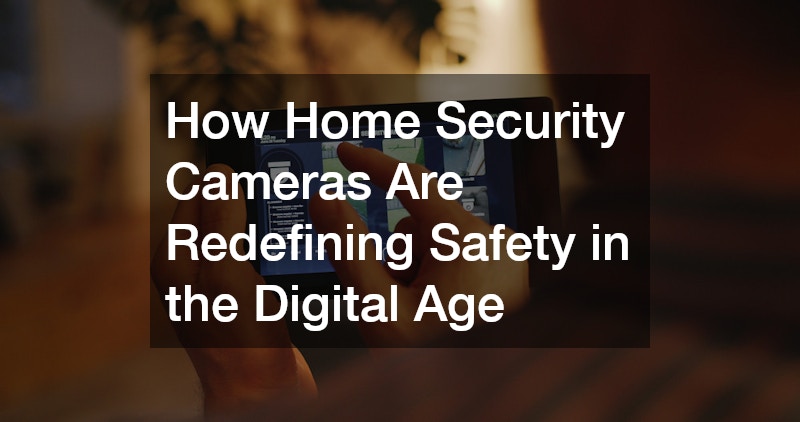In today’s increasingly interconnected world, security concerns have become more prevalent than ever before. With crime rates fluctuating and the fear of intrusion continually looming, individuals and families are prioritizing home security measures. The rise of digital solutions, particularly home security cameras, is transforming the landscape of safety by offering innovative ways to protect our homes.
1. What Are the Benefits of Home Security Cameras?
Home security cameras serve as a significant deterrent to potential intruders and burglars. The mere presence of cameras can discourage criminal activities, as perpetrators are aware they are being watched and recorded.
Additionally, cameras play a crucial role in evidence collection, helping law enforcement identify and apprehend criminals efficiently.
The footage captured by home security cameras can be invaluable during investigations, providing undeniable proof of criminal actions. This video evidence can be used in court to support legal proceedings, ensuring justice is served. As a result, the installation of security cameras not only aids in crime prevention but also enhances the entire judicial process.
Moreover, security cameras serve as a tool for community collaboration and vigilance. Neighbors can share footage with each other to help thwart potential crimes and protect their surroundings. This collective approach to safety creates an atmosphere of cooperation and mutual protection within communities.
One of the most significant advancements in security camera technology is the ability to monitor homes remotely. Through smart devices like smartphones and tablets, homeowners can access live footage and receive alerts from anywhere with an internet connection. This feature provides peace of mind, particularly for those who travel frequently or spend long hours away from home.
Remote monitoring allows homeowners to check on their properties in real-time, observing any unusual activity and taking quick action when necessary. This accessibility ensures that individuals remain connected to their homes regardless of their physical location. Furthermore, being able to receive instant notifications fosters a proactive approach to home security, empowering homeowners to respond promptly to potential threats.
This technological capability also allows users to communicate directly with other connected devices in their smart home ecosystems. By integrating security cameras with doorbell cameras or smart locks, users can ensure comprehensive protection through a unified platform. This seamless integration optimizes convenience and security simultaneously.
2. How Do Home Security Cameras Address Privacy Concerns?
With the increase in cyber threats, data security is paramount for home security camera systems. Many cameras employ robust encryption protocols to protect data during transmission and storage. This ensures that any footage captured remains secure and inaccessible to unauthorized parties.
Advanced security features such as two-factor authentication and secure cloud storage are frequently integrated into modern camera systems. These measures prevent unauthorized access to video feeds, safeguarding the owners’ privacy. By prioritizing data security, manufacturers enhance consumer confidence in using their devices.
In addition to encryption, automatic software updates play a crucial role in maintaining high security standards. These updates address vulnerabilities, protecting the systems against the latest threats. Regularly updating security features demonstrates a commitment to preserving user privacy and maintaining trust.
3. What Should You Consider When Choosing a Home Security Camera System?
Choosing a suitable home security camera involves understanding the different available types and their intended use. Indoor cameras are designed to monitor activities within the home, while outdoor cameras resist weather elements to surveil exterior areas. There are also wired and wireless options, each featuring unique advantages and applications.
Indoor cameras often offer features such as night vision and audio capabilities to record activities in low-light conditions and capture sound. In contrast, outdoor cameras typically include motion detection and weatherproof designs to withstand environmental challenges. Selecting the appropriate type depends on the specific needs and objectives of the homeowner.
Additionally, smart cameras offer advanced attributes like facial recognition and smart notifications, elevating their functionality and efficiency. Recognizing the various features and their applications allows consumers to make informed decisions to enhance their security measures effectively. Considering these elements when choosing a home security camera installer ensures a comprehensive and tailored security approach.
The evolution of home security cameras is reshaping the modern landscape of safety and protection. By offering capabilities such as crime prevention, remote monitoring, and smart integration, these cameras provide robust security solutions tailored to individual needs. Simultaneously addressing privacy concerns through encryption, user control, and legal compliance ensures that home security cameras are responsibly advancing safety in the digital age.





